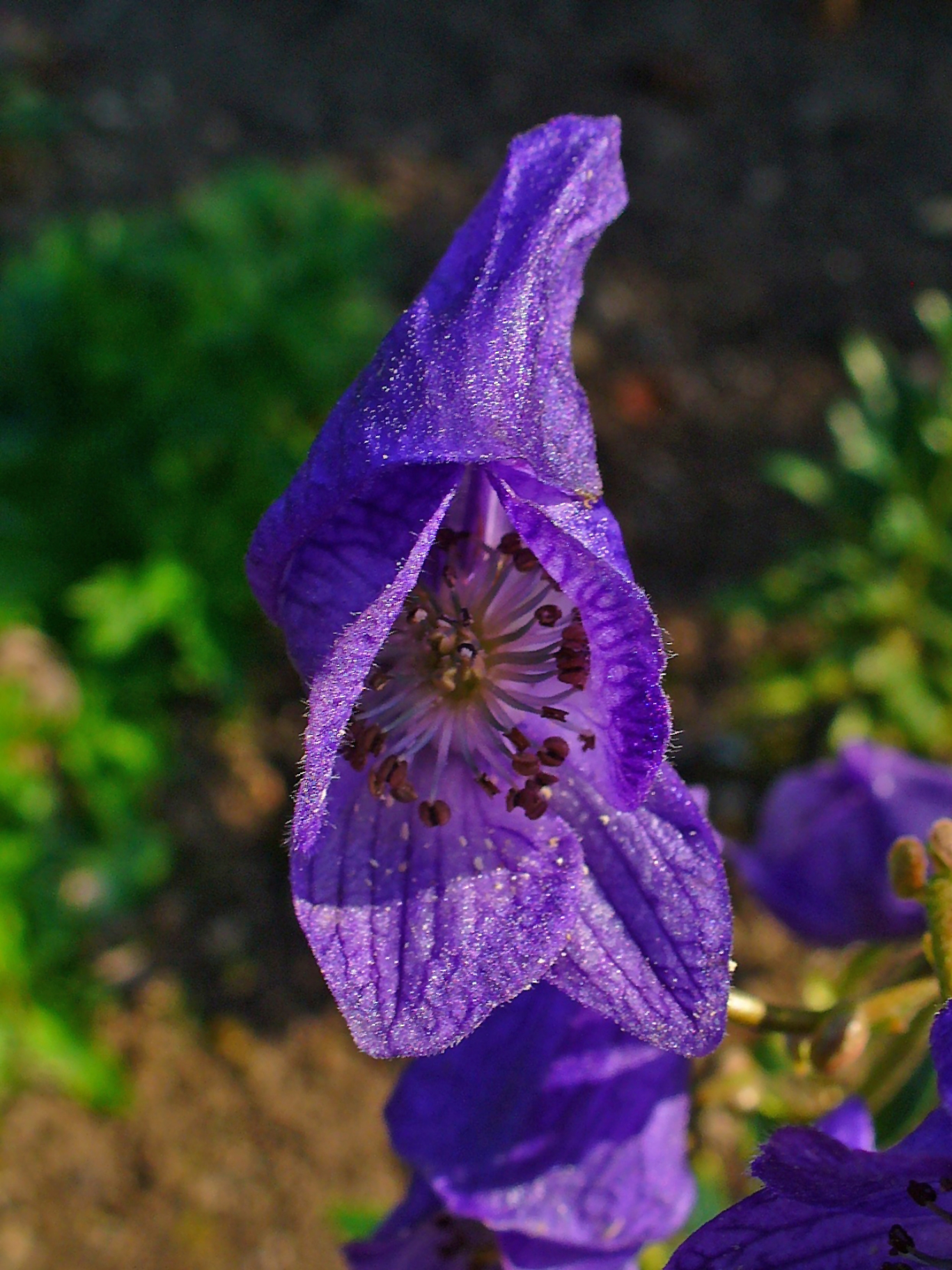

Preparations of aconitine have also been used, mostly in the past, for their medicinal properties in treating pain and fever when taken orally or as a liniment for treating rheumatism, neuralgia and sciatica. The plant is sometimes called wolfsbane owing to its use for killing wolves and its reputed ability to repel werewolves, but the name is more usually applied to the related, yellow-flowered, Aconitum lycoctonum. Extracts of the plant were applied to spears and arrows to increase their killing ability and the poison was used in ancient Rome for executions. The dangers of monkshood have been known and exploited since ancient times resulting in the name “Queen of poisons”. All parts of the plant are highly poisonous, containing the substance aconitine, an alkaloid that causes death by disrupting the ionic balance across cell membranes leading to respiratory and heart failure. What surprised me most was the warning in my flower book that monkshood is the most poisonous plant found in the UK. The unusual architectural look of the flowers has made it a popular garden plant and the name, monkshood, derives from the resemblance of the flowers to the hoods or cowls worn by monks in the past. In the south west of the UK, where I live, some rare examples of monkshood may be native but most are introduced and naturalised.

More monkshood growing by a path under the riverside trees (photo by Hazel Strange)īack home I wanted to find out what this plant was and eventually I discovered that it was Aconitum napellus or monkshood. More of the unusual flowers appeared further along, in the same sort of environment, under shade and close to the river. Neither of us had seen this plant before and, with its showy blue flowers, we speculated that it might have been a garden escapee. On the other side of the path, there was a band of trees, scrub and other vegetation bordering the river and among the shady greenery we noticed a tall plant with a skein of dark purplish-blue flowers (see picture at the top of this post) that reminded me of Dutch clogs. We saw several cuckoo bumblebees which, as their name suggests, don’t make their own nests but parasitise those bumblebees that do make nests. It was a fine meadow with plenty of insect life and we watched the many bumblebees feeding, clover being their favourite. Buttercups and catsear lent the meadow a midsummer look and beneath the nodding yellow flowers were lush grasses, globes of white clover, a few pink orchids and some good stands of yellow rattle with its hooded lemony flowers and black beaks. Part of our route took in a quiet riverside path with meadows along one side spreading up the gentle slope away from the river. So, on the Sunday after, with the weather looking good, we set out on a walk in the countryside. When the exhibition finished, just over a week ago, we were both tired and needed to recharge. Our exhibition, entitled Observation, had come to an end and the combination of Hazel’s paintings and my photographs brought many interested people into the gallery leading to good conversations. It had been a good week but very intense.


 0 kommentar(er)
0 kommentar(er)
